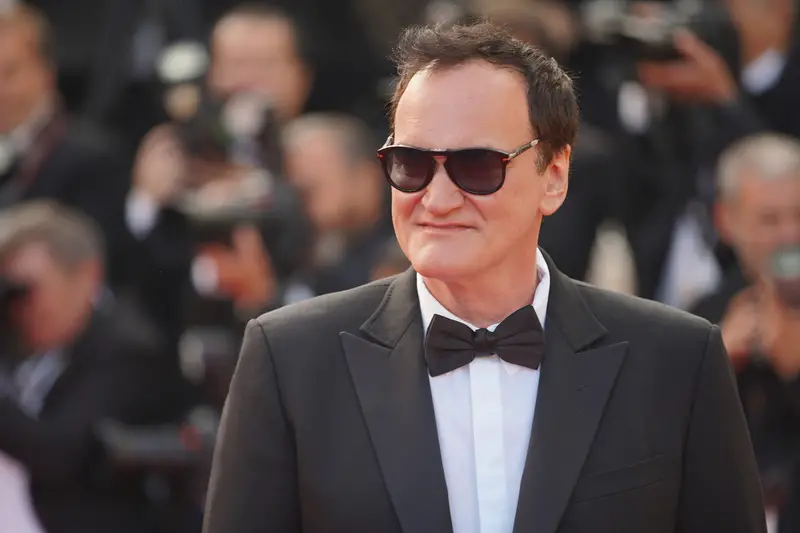Picture watching Samuel L. Jackson bite into that famous Big Kahuna burger in Pulp Fiction and suddenly craving one yourself. That wasn’t an accident – it was part of Quentin Tarantino’s master plan. The legendary director has a weird rule about food that most people don’t know about, and it goes way beyond just making sure actors don’t get hungry between takes. This strange requirement has shaped some of the most memorable eating scenes in movie history.
Actors must actually eat the food authentically
Most movie sets use fake food or have actors pretend to eat because real eating can mess up multiple takes. Tarantino throws this rule out the window completely. He demands that his actors actually consume the food they’re eating on screen, and they have to make it look genuinely appealing. This isn’t just about looking natural – it’s about creating a specific psychological effect on anyone watching the movie.
The director believes that when actors eat authentically, audiences can somehow sense the difference through the screen. He’s noticed that viewers leave theaters wanting exactly what they saw the characters eating. Think about how many people ordered cocktail ingredients after seeing Jackie Brown’s screwdriver scene. That craving wasn’t coincidence – it was Tarantino’s calculated move working perfectly on unsuspecting moviegoers.
Food scenes establish power dynamics between characters
Tarantino doesn’t just throw eating scenes into his movies randomly. He uses them like chess moves to show who’s in control and who isn’t. When Leonardo DiCaprio’s character in Django Unchained indulges in sugary treats, he’s displaying his perceived superiority over everyone around him. The Nazis in Inglourious Basterds luxuriate in French cafes for the same reason – to demonstrate their dominance through casual consumption.
These restaurant and eating scenes serve ritualistic purposes that most viewers miss entirely. The director carefully choreographs who eats what, when they eat it, and how they consume their food. Someone nervously picking at their meal might be losing power in the conversation, while another character confidently enjoying their burger could be asserting control. It’s like a secret language that speaks directly to the audience’s subconscious mind.
The Big Kahuna burger became iconic through authentic eating
That famous Pulp Fiction scene where Samuel L. Jackson’s character enjoys someone else’s burger wasn’t just great acting – it was Tarantino’s food rule in action. Jackson had to make that burger look so appealing that audiences would crave it long after leaving the theater. The scene works because Jackson actually ate the burger and made it look genuinely delicious, not like typical movie fake-eating.
The Big Kahuna burger doesn’t even exist as a real restaurant chain, but people still ask about it decades later. That’s the power of Tarantino’s authentic eating requirement working exactly as intended. The scene demonstrates dominance, creates audience cravings, and advances the plot all through one character’s burger consumption. It’s become one of the most referenced food moments in movie history precisely because it felt so real.
Multiple takes mean actors eat the same meal repeatedly
Imagine having to eat the same piece of cake fifteen times in a row because the director wants another take. That’s exactly what Tarantino’s actors face when filming eating scenes. Most movies use spit buckets or fake food to avoid this problem, but Tarantino’s authenticity rule means actors keep consuming the same foods over and over until he gets the perfect shot.
This creates unique challenges that other movie sets don’t deal with. Actors have to pace themselves, stay in character, and make each bite look as appealing as the first one, even when they’re completely full. Some actors probably dread seeing catering tables on Tarantino sets because they know they might be eating the same thing for hours. The commitment to authenticity comes with a very literal cost to the actors’ stomachs.
Restaurant scenes serve as ritualistic storytelling devices
Most directors treat restaurant scenes as simple background settings, but Tarantino turns them into complex rituals that reveal character relationships. The way someone orders, eats, or shares food becomes part of the story itself. These scenes often mark turning points in his movies, where power shifts between characters or important information gets revealed through seemingly casual conversations over meals.
The ritual aspect goes beyond just eating – it includes everything from how characters hold their utensils to whether they finish their plates. Tarantino choreographs these moments like dance sequences, where every gesture has meaning. A character pushing their plate away might signal rejection or disgust, while someone savoring every bite could be showing contentment or control. These details create layers of meaning that most viewers absorb without realizing it.
Audiences become unwitting participants through food cravings
Tarantino discovered something that food advertisers have known for years – watching people genuinely enjoy food makes observers want that same food. His authentic eating rule transforms movie audiences into participants rather than just viewers. People don’t just watch his characters eat; they psychologically connect with the experience and develop real cravings for what they’re seeing on screen.
This connection happens without most people realizing it. Someone might leave a Tarantino movie suddenly wanting a specific drink or snack without understanding why. The director has essentially turned his films into subconscious advertisements for whatever his characters consume. It’s manipulation in the best possible way – using authentic human responses to food enjoyment to create deeper emotional engagement with his stories. The audience becomes part of the movie experience rather than just observing it.
Simple actions become powerful cinematic tools
What seems like basic human behavior – eating food – becomes something much more complex in Tarantino’s hands. He’s proven that simple actions like taking a bite or sipping a drink can carry as much dramatic weight as elaborate action sequences. This approach challenges other filmmakers to think differently about everyday activities and how they can serve storytelling purposes.
The power comes from the authenticity requirement itself. When actors really eat instead of pretending, something genuine happens that cameras capture and audiences feel. It’s the difference between watching someone fake laugh and hearing real laughter – people can sense the difference even if they can’t explain why. This authenticity in food consumption creates trust between the audience and the characters, making everything else in the scene more believable and impactful.
Food consumption demonstrates character dominance and control
Tarantino uses eating habits to reveal character personalities without needing dialogue or exposition. Confident characters eat with gusto and enjoyment, while nervous or submissive characters might barely touch their food. The way someone consumes their meal tells the audience everything they need to know about that person’s state of mind and position in the scene’s power structure.
This technique works because eating is such a fundamental human activity that everyone understands instinctively. When someone eats confidently, it signals comfort and control. When they pick at their food or eat hesitantly, it suggests anxiety or weakness. Tarantino exploits these natural associations to communicate complex character information through simple eating behaviors. The authentic consumption requirement ensures these signals come across as genuine rather than theatrical, making them more effective at influencing audience perceptions.
Tarantino’s bizarre food rule proves that the smallest details can make the biggest difference in filmmaking. His insistence on authentic eating has created some of cinema’s most memorable food moments and influenced how audiences connect with characters on screen. Next time someone watches one of his movies and suddenly craves what the characters are eating, they’ll know it wasn’t accidental – it was calculated movie magic at work.

